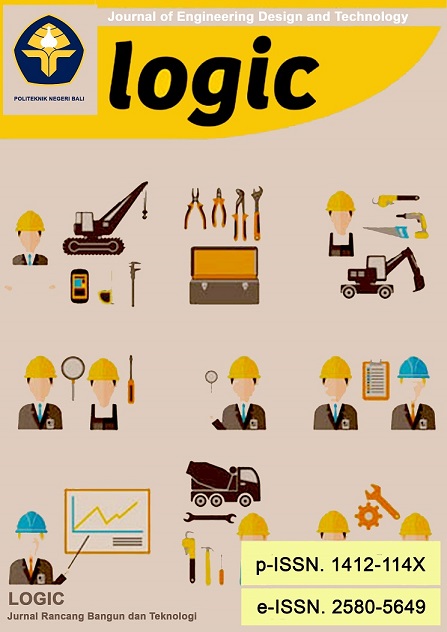Feasibility Evaluation of Public Passenger Transport Connecting Urban and Rural Areas
Case Study: Wangaya-Sangeh-Pelaga Terminal Route
Abstract
The purpose of this study is to evaluate the feasibility of carrying out public passenger transportation which is influenced by the population, potential residents to travel and ownership of private vehicles, by examining the Wangaya-Sangeh-Pelaga Terminal Route. The data collection method is by downloading secondary data from BPS Denpasar City and BPS Badung Regency in 2020. The secondary data required in each sub-district / village are: population; number of households; number of potential residents to travel (aged 5-65 years); ownership of 4-wheeled vehicles (cars); and ownership of two-wheeled vehicles (motorbikes). The data analysis method used is the Guidelines for the Delivery of General Passenger Transportation from the Directorate General of Land Transportation, Decree No. SK.687 / AJ.206 / DRJD / 2002. Of the fifteen sub-districts / villages that the Wanagaya-Sangeh-Pelaga Terminal Route route passes, only four sub-districts / villages are eligible to be included in the AUP service area, meeting the N> R requirements. Eleven other kelurahan / villages cannot be included in the transportation management area. general passenger. Thus, the Wangaya-Sangeh-Pelaga Terminal Route is not suitable for public passenger transportation.




1.png)





